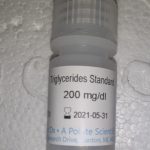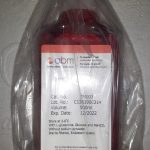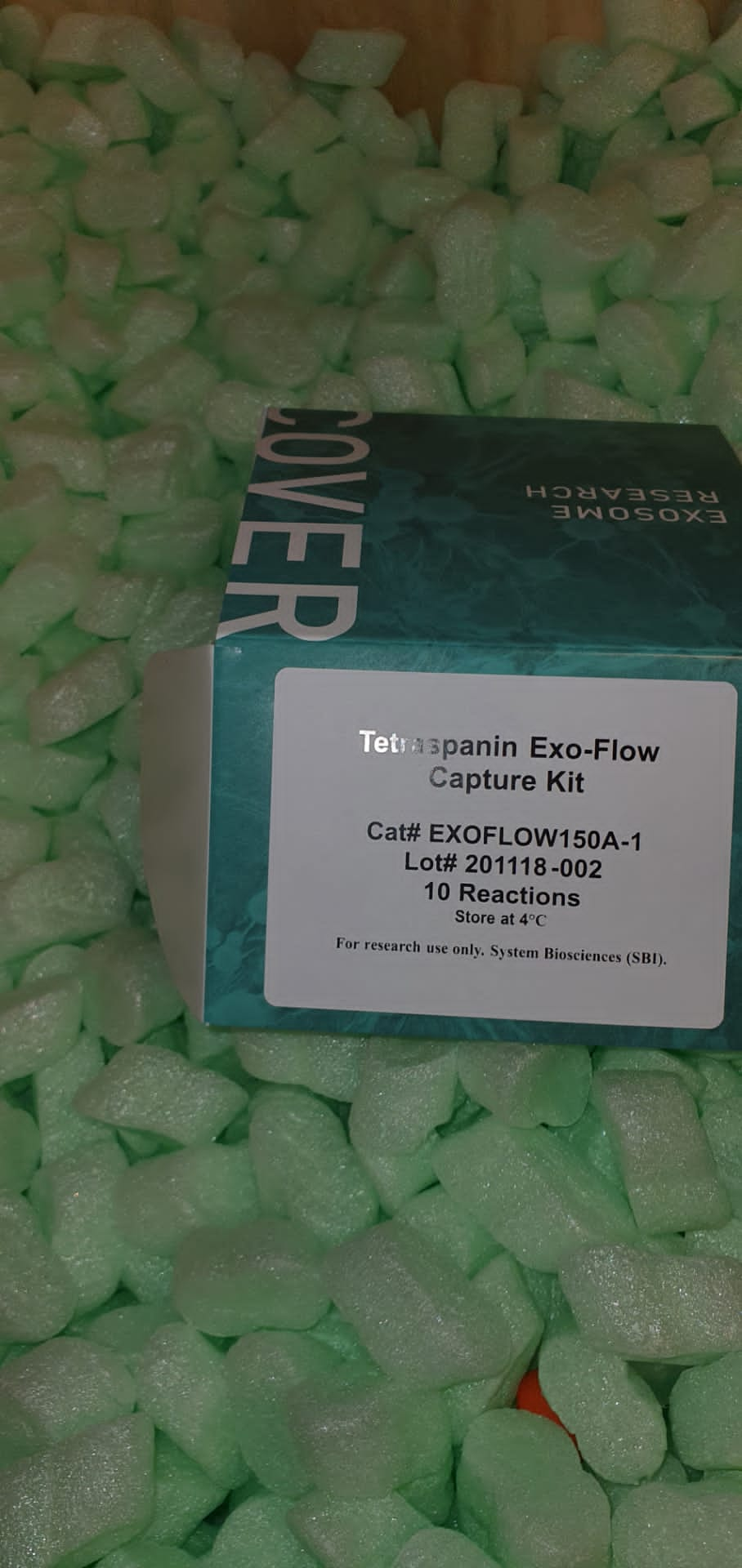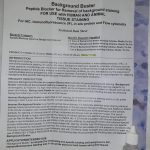Acute myocardial infarction (AMI) seriously threatens human life. In this study we aimed to systemically analyze the function of key gene modules in human platelets in AMI. We used weighted gene co-expression network analysis (WGCNA) to construct a co-expression module, and analyzed the relationship between potential modules and clinical characteristics based on platelet RNA-seq RPKM count reads of 16 ST-segment elevation myocardial infarction (STEMI) patients and 16 non-STEMI (NSTEMI) patients provided by the GEO database.
Gene Ontology (GO) and Kyoto Encyclopedia of Genes and Genomes (KEGG) analysis were performed with the DAVID tool. Hub genes were calculated by the Cytohubba package. A total of 3653 genes was selected to construct the co-expression modules.
A significant correlation between BMI and the module with color of sky-blue in STEMI. In NSTEMI, there was a significant correlation between the sky blue module and CAD, the Salmon module and HT, and the Cyan module and HT. In STEMI, the Hub genes were mainly enriched in functions related to cell membrane signal transduction including Aqp1, Armcx1, Gsta4, Hist3h2a and Il17re.
In NSTEMI, the Hub genes are related mainly to energy metabolism in the sky-blue module including Olr1, Nap1l3, Gfer, Dohh, Crispld1 and Ccdc8b; they are mainly related to extracellular space and calcium binding in the Cyan module, including Clec12b, Chd4, Asgr1, Armcx4, Chid1 and Alkbh7.
The hub genes in the Salmon module include Ell3, Aldh1b1, Cavin4, Cabp4, Eif1ay and Dus3l. Our results provide a framework for co-expression gene modules in STEMI and NSTEMI patients, and identify key targets as biomarkers for patients with different subtypes of AMI.
Reproducibility and sensitivity of 36 methods to quantify the SARS-CoV-2 genetic signal in raw wastewater: findings from an interlaboratory methods evaluation in the U.S
In response to COVID-19, the international water community rapidly developed methods to quantify the SARS-CoV-2 genetic signal in untreated wastewater. Wastewater surveillance using such methods has the potential to complement clinical testing in assessing community health. This interlaboratory assessment evaluated the reproducibility and sensitivity of 36 standard operating procedures (SOPs), divided into eight method groups based on sample concentration approach and whether solids were removed.
Two raw wastewater samples were collected in August 2020, amended with a matrix spike (betacoronavirus OC43), and distributed to 32 laboratories across the U.S. Replicate samples analyzed in accordance with the project’s quality assurance plan showed high reproducibility across the 36 SOPs: 80% of the recovery-corrected results fell within a band of ±1.15 log10 genome copies per L with higher reproducibility observed within a single SOP (standard deviation of 0.13 log10).
The inclusion of a solids removal step and the selection of a concentration method did not show a clear, systematic impact on the recovery-corrected results. Other methodological variations (e.g., pasteurization, primer set selection, and use of RT-qPCR or RT-dPCR platforms) generally resulted in small differences compared to other sources of variability.
These findings suggest that a variety of methods are capable of producing reproducible results, though the same SOP or laboratory should be selected to track SARS-CoV-2 trends at a given facility. The methods showed a 7 log10 range of recovery efficiency and limit of detection highlighting the importance of recovery correction and the need to consider method sensitivity when selecting methods for wastewater surveillance.
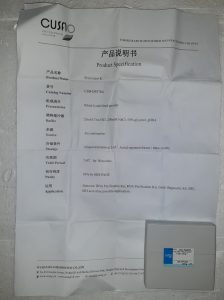
stjosephs-hospital
ExTraMapper: Exon- and Transcript-level mappings for orthologous gene pairs
Motivation: Access to large-scale genomics and transcriptomics data from various tissues and cell lines allowed the discovery of wide-spread alternative splicing events and alternative promoter usage in mammalians. Between human and mouse, gene-level orthology is currently present for nearly 16k protein-coding genes spanning a diverse repertoire of over 200k total transcript isoforms.
Results: Here, we describe a novel method, ExTraMapper, which leverages sequence conservation between exons of a pair of organisms and identifies a fine-scale orthology mapping at the exon and then transcript level. ExTraMapper identifies more than 350k exon mappings, as well as 30k transcript mappings between human and mouse using only sequence and gene annotation information.
We demonstrate that ExTraMapper identifies a larger number of exon and transcript mappings compared to previous methods. Further, it identifies exon fusions, splits, and losses due to splice site mutations, and finds mappings between microexons that are previously missed.
By reanalysis of RNA-seq data from 13 matched human and mouse tissues, we show that ExTraMapper improves the correlation of transcript-specific expression levels suggesting a more accurate mapping of human and mouse transcripts. We also applied the method to detect conserved exon and transcript pairs between human and rhesus macaque genomes to highlight the point that ExTraMapper is applicable to any pair of organisms that have orthologous gene pairs.
Availability: The source code and the results are available
Unconventional viral gene expression mechanisms as therapeutic targets
Unlike the human genome that comprises mostly noncoding and regulatory sequences, viruses have evolved under the constraints of maintaining a small genome size while expanding the efficiency of their coding and regulatory sequences.
As a result, viruses use strategies of transcription and translation in which one or more of the steps in the conventional gene-protein production line are altered. These alternative strategies of viral gene expression (also known as gene recoding) can be uniquely brought about by dedicated viral enzymes or by co-opting host factors (known as host dependencies).
Targeting these unique enzymatic activities and host factors exposes vulnerabilities of a virus and provides a paradigm for the design of novel antiviral therapies. In this Review, we describe the types and mechanisms of unconventional gene and protein expression in viruses, and provide a perspective on how future basic mechanistic work could inform translational efforts that are aimed at viral eradication.
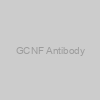 GCNF Antibody |
|
MBS9435332-005mL |
MyBiosource |
0.05mL |
EUR 325 |
 GCNF Antibody |
|
MBS9435332-01mL |
MyBiosource |
0.1mL |
EUR 445 |
 GCNF Antibody |
|
MBS9435332-5x01mL |
MyBiosource |
5x0.1mL |
EUR 1860 |
 GCNF Antibody |
|
MBS9631462-5x1mg |
MyBiosource |
5x1mg |
EUR 1545 |
 GCNF Antibody |
|
MBS9629079-01mL |
MyBiosource |
0.1mL |
EUR 260 |
 GCNF Antibody |
|
MBS9629079-02mL |
MyBiosource |
0.2mL |
EUR 305 |
 GCNF Antibody |
|
MBS9629079-5x02mL |
MyBiosource |
5x0.2mL |
EUR 1220 |
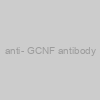 anti- GCNF antibody |
|
FNab03390 |
FN Test |
100µg |
EUR 606.3 |
|
|
|
Description: Antibody raised against GCNF |
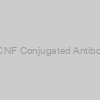 GCNF Conjugated Antibody |
|
C48479 |
SAB |
100ul |
EUR 476.4 |
 GCNF Conjugated Antibody |
|
MBS9456445-01mLAF350 |
MyBiosource |
0.1mL(AF350) |
EUR 480 |
 GCNF Conjugated Antibody |
|
MBS9456445-01mLAF405 |
MyBiosource |
0.1mL(AF405) |
EUR 480 |
 GCNF Conjugated Antibody |
|
MBS9456445-01mLAF488 |
MyBiosource |
0.1mL(AF488) |
EUR 480 |
 GCNF Conjugated Antibody |
|
MBS9456445-01mLAF555 |
MyBiosource |
0.1mL(AF555) |
EUR 480 |
 GCNF Conjugated Antibody |
|
MBS9456445-01mLBiotin |
MyBiosource |
0.1mL(Biotin) |
EUR 480 |
 Antibody) Germ Cell Nuclear Factor (GCNF) Antibody |
|
20-abx131389 |
Abbexa |
-
Ask for price
-
Ask for price
-
Ask for price
-
Ask for price
-
Ask for price
|
-
100 ug
-
10 ug
-
1 mg
-
200 ug
-
50 ug
|
|
|
 Antibody) Germ Cell Nuclear Factor (GCNF) Antibody |
|
abx131389-02mg |
Abbexa |
0.2 mg |
EUR 337.5 |
 Antibody) Germ Cell Nuclear Factor (GCNF) Antibody |
|
abx131389-05mg |
Abbexa |
0.5 mg |
EUR 750 |
 Antibody) Germ Cell Nuclear Factor (GCNF) Antibody |
|
abx131389-100g |
Abbexa |
100 µg |
EUR 275 |
) Polyclonal NR6A1 / GCNF Antibody (Ligand-binding Domain) |
|
AMM06820G |
Leading Biology |
0.05mg |
EUR 580.8 |
|
Description: A polyclonal antibody raised in Rabbit that recognizes and binds to Human NR6A1 / GCNF (Ligand-binding Domain). This antibody is tested and proven to work in the following applications: |
) GCNF (anti human nuclear recepter antibody, clone# H7921) |
|
PP-H7921-00 |
Sceti |
0.1mg/100uL |
EUR 747.6 |
|
Description: The GCNF (anti human nuclear recepter antibody, clone# H7921) is available in Europe and for worldwide shipping via Gentaur. |
 GCNF |
|
E8EM1710-12 |
EnoGene |
100ul |
EUR 275 |
|
Description: Available in various conjugation types. |
 GCNF |
|
MBS8565176-01mLAF405L |
MyBiosource |
0.1mL(AF405L) |
EUR 565 |
 GCNF |
|
MBS8565176-01mLAF405S |
MyBiosource |
0.1mL(AF405S) |
EUR 565 |
 GCNF |
|
MBS8565176-01mLAF610 |
MyBiosource |
0.1mL(AF610) |
EUR 565 |
 GCNF |
|
MBS8565176-01mLAF635 |
MyBiosource |
0.1mL(AF635) |
EUR 565 |
 Polyclonal Antibody) Germ Cell Nuclear Factor (GCNF) Polyclonal Antibody |
|
CAU24184-100ul |
Biomatik Corporation |
100ul |
EUR 235.2 |
 Polyclonal Antibody) Germ Cell Nuclear Factor (GCNF) Polyclonal Antibody |
|
CAU24184-200ul |
Biomatik Corporation |
200ul |
EUR 294 |
 Polyclonal Antibody) Germ Cell Nuclear Factor (GCNF) Polyclonal Antibody |
|
MBS2032347-01mL |
MyBiosource |
0.1mL |
EUR 175 |
 Polyclonal Antibody) Germ Cell Nuclear Factor (GCNF) Polyclonal Antibody |
|
MBS2032347-02mL |
MyBiosource |
0.2mL |
EUR 220 |
 Polyclonal Antibody) Germ Cell Nuclear Factor (GCNF) Polyclonal Antibody |
|
MBS2032347-05mL |
MyBiosource |
0.5mL |
EUR 355 |
 Polyclonal Antibody) Germ Cell Nuclear Factor (GCNF) Polyclonal Antibody |
|
MBS2032347-1mL |
MyBiosource |
1mL |
EUR 435 |
 Polyclonal Antibody) Germ Cell Nuclear Factor (GCNF) Polyclonal Antibody |
|
MBS2032347-5mL |
MyBiosource |
5mL |
EUR 1185 |
 Antibody Pair Kit (with Standard)) Human Germ Cell Nuclear Factor (GCNF) Antibody Pair Kit (with Standard) |
|
MBS2101752-10x96Tests |
MyBiosource |
10x96Tests |
EUR 1480 |
 Antibody Pair Kit (with Standard)) Human Germ Cell Nuclear Factor (GCNF) Antibody Pair Kit (with Standard) |
|
MBS2101752-10x96TestsMBS2090685AbPairsSupportPack110x96Tests |
MyBiosource |
10x96Tests+MBS2090685(AbPairsSupportPack1,10x96Tests) |
EUR 1600 |
 Antibody Pair Kit (with Standard)) Human Germ Cell Nuclear Factor (GCNF) Antibody Pair Kit (with Standard) |
|
MBS2101752-5x96Tests |
MyBiosource |
5x96Tests |
EUR 935 |
 Antibody Pair Kit (with Standard)) Human Germ Cell Nuclear Factor (GCNF) Antibody Pair Kit (with Standard) |
|
MBS2101752-5x96TestsMBS2090685AbPairsSupportPack15x96Tests |
MyBiosource |
5x96Tests+MBS2090685(AbPairsSupportPack1,5x96Tests) |
EUR 1010 |
) Polyclonal Antibody to Germ Cell Nuclear Factor (GCNF) |
|
PAC509Hu01 |
Cloud-Clone |
100ul |
EUR 245 |
|
|
 Polyclonal Antibody (Human)) Germ Cell Nuclear Factor (GCNF) Polyclonal Antibody (Human) |
|
4-PAC509Hu01 |
Cloud-Clone |
-
Ask for price
-
Ask for price
-
Ask for price
-
Ask for price
-
Ask for price
|
-
100ul
-
10ml
-
1ml
-
200ul
-
20ul
|
|
|
|
Description: A Rabbit polyclonal antibody against Human Germ Cell Nuclear Factor (GCNF) |
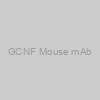 GCNF Mouse mAb |
|
E2220732 |
EnoGene |
100ul |
EUR 225 |
|
Description: Available in various conjugation types. |
 GCNF Mouse mAb |
|
MBS8538939-01mL |
MyBiosource |
0.1mL |
EUR 305 |
 GCNF Mouse mAb |
|
MBS8538939-01mLAF405L |
MyBiosource |
0.1mL(AF405L) |
EUR 565 |
 GCNF Mouse mAb |
|
MBS8538939-01mLAF405S |
MyBiosource |
0.1mL(AF405S) |
EUR 565 |
 GCNF Mouse mAb |
|
MBS8538939-01mLAF610 |
MyBiosource |
0.1mL(AF610) |
EUR 565 |
 GCNF Mouse mAb |
|
MBS8538939-01mLAF635 |
MyBiosource |
0.1mL(AF635) |
EUR 565 |
 Polyclonal Antibody (Human), PE) Germ Cell Nuclear Factor (GCNF) Polyclonal Antibody (Human), PE |
|
4-PAC509Hu01-PE |
Cloud-Clone |
-
Ask for price
-
Ask for price
-
Ask for price
-
Ask for price
-
Ask for price
|
-
100ul
-
10ml
-
1ml
-
200ul
-
20ul
|
|
|
|
Description: A Rabbit polyclonal antibody against Human Germ Cell Nuclear Factor (GCNF). This antibody is labeled with PE. |
 Polyclonal Antibody (Human), APC) Germ Cell Nuclear Factor (GCNF) Polyclonal Antibody (Human), APC |
|
4-PAC509Hu01-APC |
Cloud-Clone |
-
Ask for price
-
Ask for price
-
Ask for price
-
Ask for price
-
Ask for price
|
-
100ul
-
10ml
-
1ml
-
200ul
-
20ul
|
|
|
|
Description: A Rabbit polyclonal antibody against Human Germ Cell Nuclear Factor (GCNF). This antibody is labeled with APC. |
 Polyclonal Antibody (Human), Cy3) Germ Cell Nuclear Factor (GCNF) Polyclonal Antibody (Human), Cy3 |
|
4-PAC509Hu01-Cy3 |
Cloud-Clone |
-
Ask for price
-
Ask for price
-
Ask for price
-
Ask for price
-
Ask for price
|
-
100ul
-
10ml
-
1ml
-
200ul
-
20ul
|
|
|
|
Description: A Rabbit polyclonal antibody against Human Germ Cell Nuclear Factor (GCNF). This antibody is labeled with Cy3. |
 Polyclonal Antibody (Human), HRP) Germ Cell Nuclear Factor (GCNF) Polyclonal Antibody (Human), HRP |
|
4-PAC509Hu01-HRP |
Cloud-Clone |
-
Ask for price
-
Ask for price
-
Ask for price
-
Ask for price
-
Ask for price
|
-
100ul
-
10ml
-
1ml
-
200ul
-
20ul
|
|
|
|
Description: A Rabbit polyclonal antibody against Human Germ Cell Nuclear Factor (GCNF). This antibody is labeled with HRP. |
 Polyclonal Antibody (Human), FITC) Germ Cell Nuclear Factor (GCNF) Polyclonal Antibody (Human), FITC |
|
4-PAC509Hu01-FITC |
Cloud-Clone |
-
Ask for price
-
Ask for price
-
Ask for price
-
Ask for price
-
Ask for price
|
-
100ul
-
10ml
-
1ml
-
200ul
-
20ul
|
|
|
|
Description: A Rabbit polyclonal antibody against Human Germ Cell Nuclear Factor (GCNF). This antibody is labeled with FITC. |
 Polyclonal Antibody (Human), Biotinylated) Germ Cell Nuclear Factor (GCNF) Polyclonal Antibody (Human), Biotinylated |
|
4-PAC509Hu01-Biotin |
Cloud-Clone |
-
Ask for price
-
Ask for price
-
Ask for price
-
Ask for price
-
Ask for price
|
-
100ul
-
10ml
-
1ml
-
200ul
-
20ul
|
|
|
|
Description: A Rabbit polyclonal antibody against Human Germ Cell Nuclear Factor (GCNF). This antibody is labeled with Biotin. |
) PE-Linked Polyclonal Antibody to Germ Cell Nuclear Factor (GCNF) |
|
MBS2066290-01mL |
MyBiosource |
0.1mL |
EUR 265 |
) PE-Linked Polyclonal Antibody to Germ Cell Nuclear Factor (GCNF) |
|
MBS2066290-02mL |
MyBiosource |
0.2mL |
EUR 355 |
) PE-Linked Polyclonal Antibody to Germ Cell Nuclear Factor (GCNF) |
|
MBS2066290-05mL |
MyBiosource |
0.5mL |
EUR 660 |
) PE-Linked Polyclonal Antibody to Germ Cell Nuclear Factor (GCNF) |
|
MBS2066290-1mL |
MyBiosource |
1mL |
EUR 810 |
) PE-Linked Polyclonal Antibody to Germ Cell Nuclear Factor (GCNF) |
|
MBS2066290-5mL |
MyBiosource |
5mL |
EUR 2330 |
 Polyclonal Antibody (Human), APC-Cy7) Germ Cell Nuclear Factor (GCNF) Polyclonal Antibody (Human), APC-Cy7 |
|
4-PAC509Hu01-APC-Cy7 |
Cloud-Clone |
-
Ask for price
-
Ask for price
-
Ask for price
-
Ask for price
-
Ask for price
|
-
100ul
-
10ml
-
1ml
-
200ul
-
20ul
|
|
|
|
Description: A Rabbit polyclonal antibody against Human Germ Cell Nuclear Factor (GCNF). This antibody is labeled with APC-Cy7. |
) APC-Linked Polyclonal Antibody to Germ Cell Nuclear Factor (GCNF) |
|
MBS2066291-01mL |
MyBiosource |
0.1mL |
EUR 265 |
) APC-Linked Polyclonal Antibody to Germ Cell Nuclear Factor (GCNF) |
|
MBS2066291-02mL |
MyBiosource |
0.2mL |
EUR 355 |
) APC-Linked Polyclonal Antibody to Germ Cell Nuclear Factor (GCNF) |
|
MBS2066291-05mL |
MyBiosource |
0.5mL |
EUR 660 |
) APC-Linked Polyclonal Antibody to Germ Cell Nuclear Factor (GCNF) |
|
MBS2066291-1mL |
MyBiosource |
1mL |
EUR 810 |



















 Antibody)
 Antibody)
 Antibody)
 Antibody)
)
)






 Polyclonal Antibody)
 Polyclonal Antibody)
 Polyclonal Antibody)
 Polyclonal Antibody)
 Polyclonal Antibody)
 Polyclonal Antibody)
 Polyclonal Antibody)
 Antibody Pair Kit (with Standard))
 Antibody Pair Kit (with Standard))
 Antibody Pair Kit (with Standard))
 Antibody Pair Kit (with Standard))
)
 Polyclonal Antibody (Human))
 Antibody)
 Antibody)






 Polyclonal Antibody (Human), PE)
 (N-term) rabbit polyclonal antibody, Aff - Purified)
 Polyclonal Antibody (Human), APC)
 Polyclonal Antibody (Human), Cy3)
 Polyclonal Antibody (Human), HRP)
 Polyclonal Antibody (Human), FITC)
 Polyclonal Antibody (Human), Biotinylated)
)
)
)
)
)
 Polyclonal Antibody (Human), APC-Cy7)
)
)
)
)

